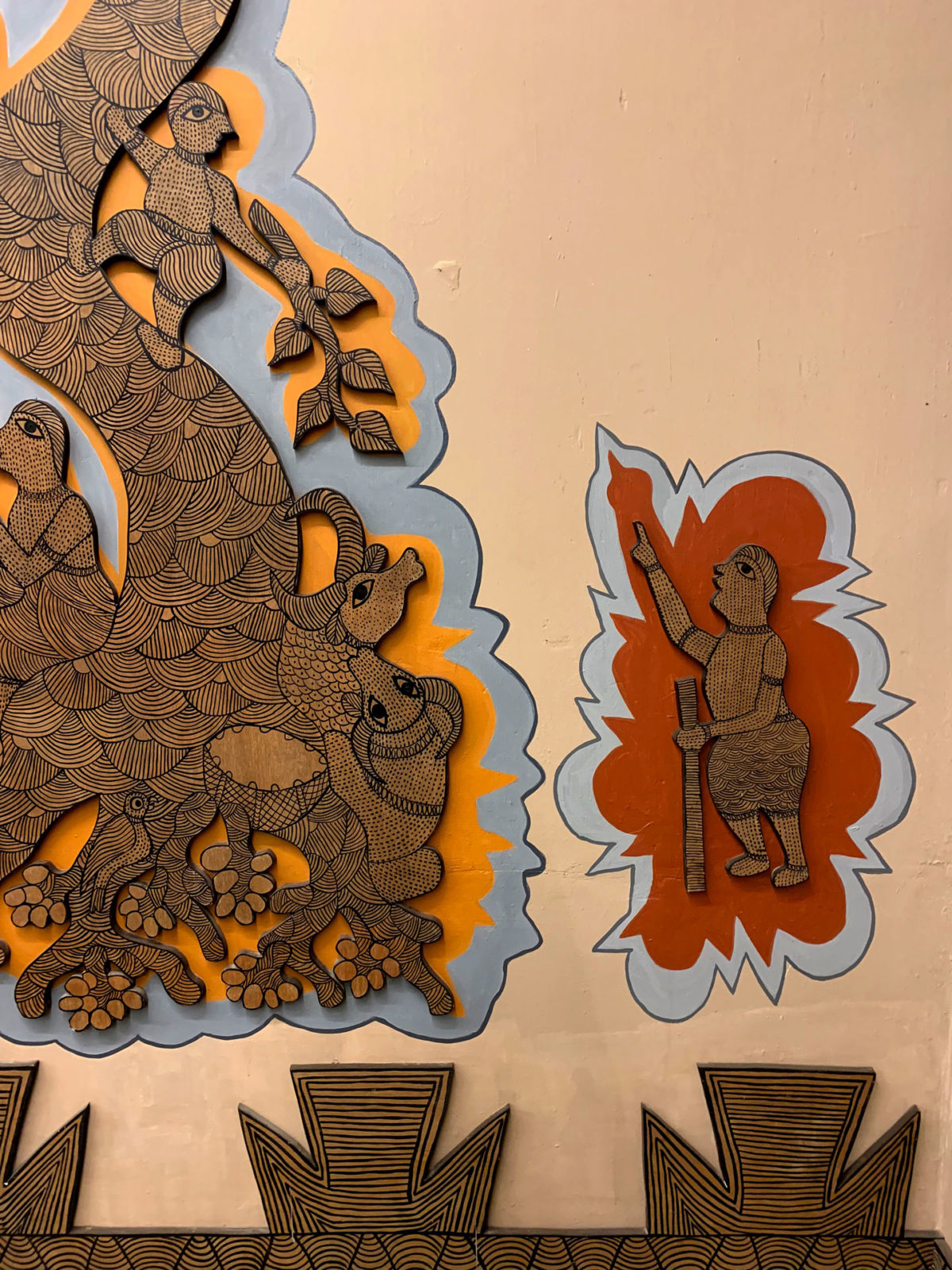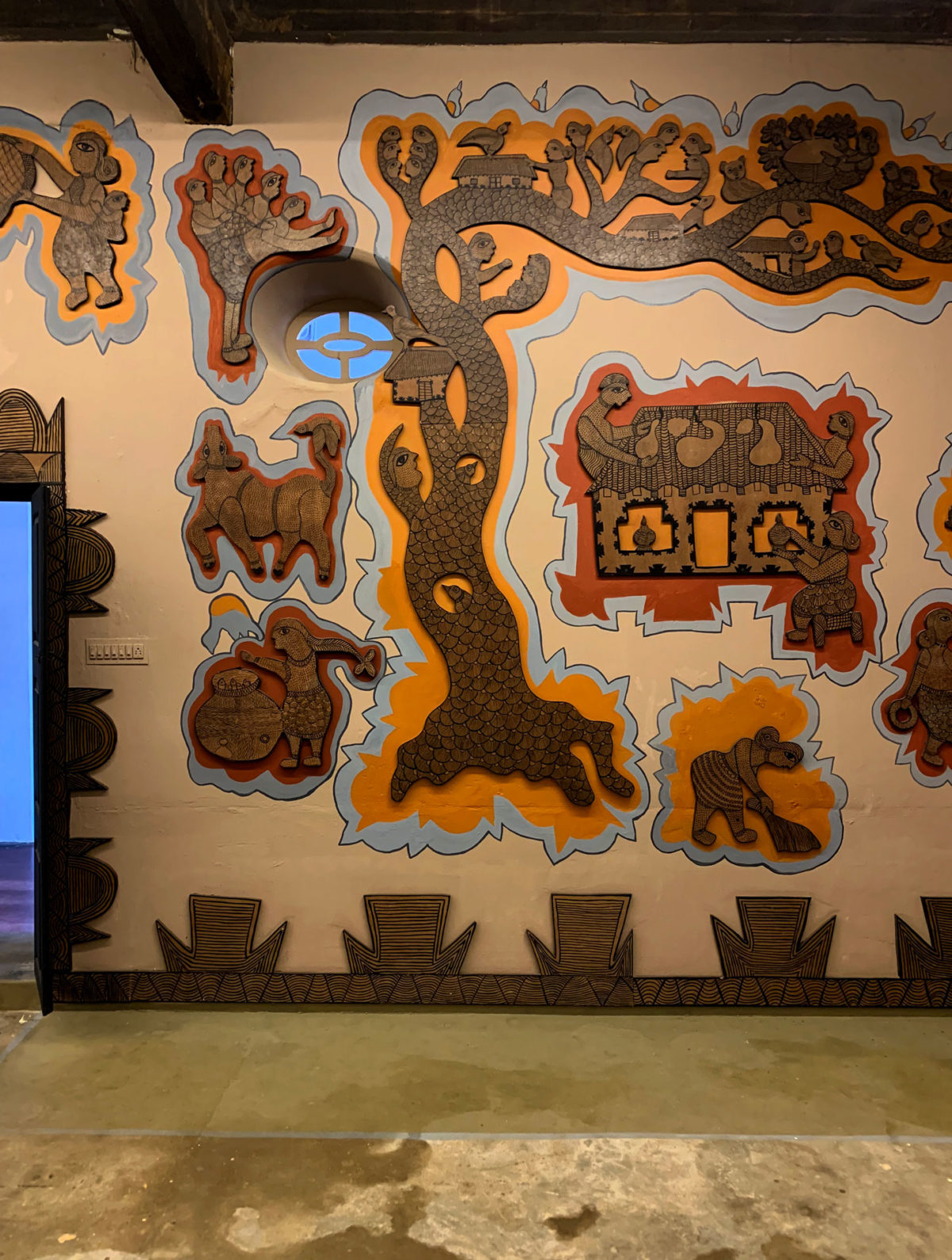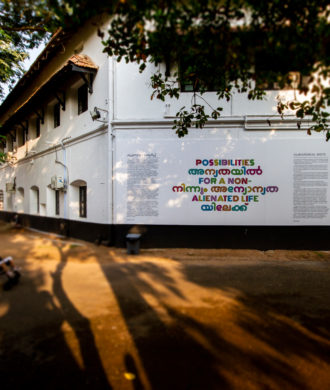Durgabai and Subhash Vyam ki Dus Motin Kanya and Jal Devata Kochi mein
It is a delight to see Gond art at the Kochi Biennale. Anita Dube’s motivation to make her Biennale more inclusive gives a much-needed platform for tribal art in India. Sitting here shoulder-to-shoulder amongst other artists the art of Jangarh Singh Shyam’s legacy finally gets its due.
Gondi Bhitti Chitrakala is a traditional art form practiced by the Gond tribe. Traditionally, it is the art of painting on the walls and floors of their mud houses and transforming their humble homes into vivid displays of art. With stories and textures, each artwork is both personalized and universal in a language that is the Gond aesthetic. The seemingly unending dots and lines have the same zen-like quality of the aboriginal art forms. It is a similar way of life that nurtures this sacred league of artists; brought up with deep sensitivities that are enriched by cultural leanings and religious beliefs born living in deep unison with nature. It is the ebullient observance of the same oral traditions of their life and folklores that they unleash on the viewer through art at the Biennale.
At Kochi Biennale one of the first exhibitions that welcome one is Durgabai and Subhas Vyam’s, it is one of the four Infra Projects here. The art room is filled with the retelling of their folktale Dus Motin Kanya and Jal Devta, the artists Durgabai’s and Shyam’s use of perception, as is ubiquitous with tribal artforms, captures the energies of the elements as the artists untether the stories they grew up on on the walls of the space. Form, figure, movements have intertwined and leap on to the walls like dreams. As you step inside it swirls around like a whirlwind of a story, ready to engulf you. The Dus Motin Kanya and Jal Devta is a story that has been widely written about. It is the story of a girl, her family and their society that lives amidst nature. The phases in the life of the girl as she grows into a woman. Adored by her parents and brothers, she is ill-treated by her sister-in-law. Like a fairy tale princess-in-anguish, she grows into a woman wooed by the Jal Devata (Water God) and her marriage to him forms the crux of the story. It is a story one has heard in different permutations and this one too draws you in.

Every phase of her village life is one outlined with nature. Frame after frame painted on marine plywood in shades of earth beguile you into surrendering to its innocent charm. The story unfolds in childlike measures, full of play, wonder, and fear. A charming suspension of belief makes your mind intervene between the spaces and explore the mystery further. As I walked around in the absence of more information about the artist’s exact intention I wanted to form the connections between the art and the land, Kerala, Kochi, its shores, the harbor. I found it in the snake-like slithering of trees and humans that reminded me of the sacred sarpakaavu (snake garden) that dot this landscape. The villages and hutments on top of trees, ladies cleaning fish, All brought memories of how as a child I remember my village – green, frugal, filled with sandcastles made of coconut mounds piled on earth. As you stare into the frames, one sees these connections, stories within stories – some prescribed, some conjured.
The work is masterful. Lines snake-in and out – complex, layered and fluid. Its handmade artisanal quality, the choice of colours, the plethora of characters, the visual drama of individual frames. Special mention of the child-woman lying with her hair floating in the water. Her tresses ripples with fishes and snakes glide between them. She is lost and you can almost feel the lightness of her floating hair. It is haunting visual at par with the painting of Ophelia painted by John Everett Millais. This is an absolute Imaginarium of an epic folktale that is now forever imprinted with the salty breathe of Kochi.







